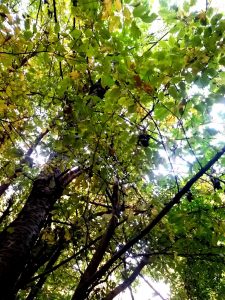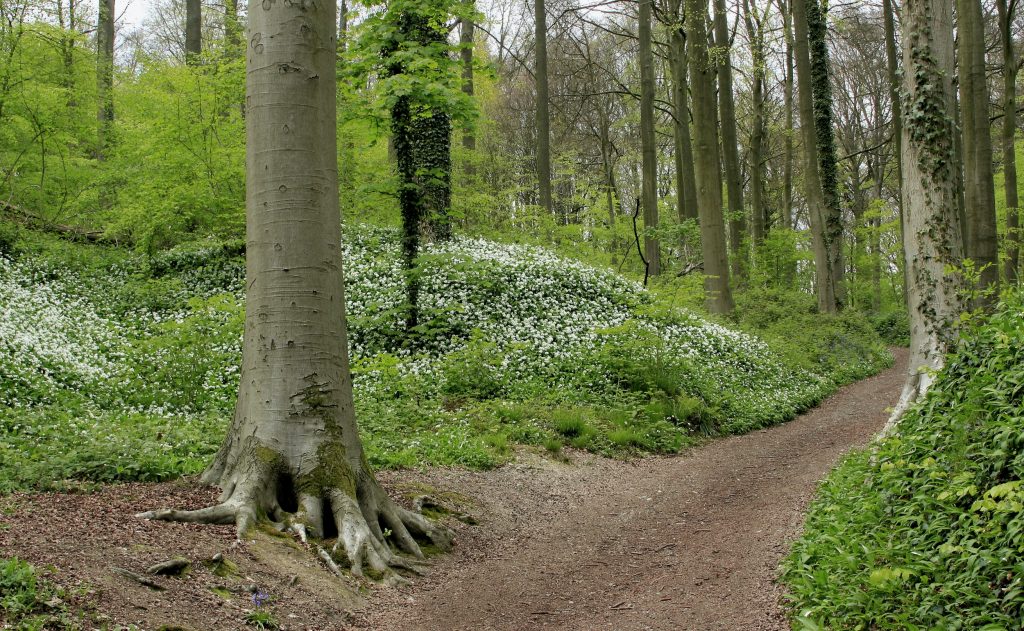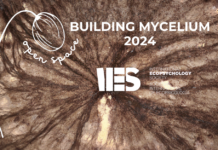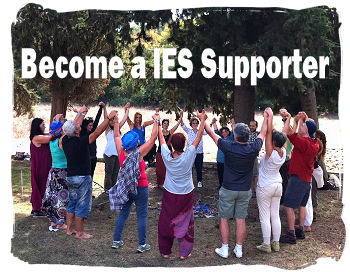One of the basic bias of the dominant paradigm is our altered perception. In this article, I will approach this issue from the natural sciences perspective, giving some concrete examples on how ecological literacy can enable us see the unseen connections, networks and living systems behind them. Through these examples, I will emphasize the role of the scientific knowledge besides the emotional attachment to the more-than-human life, in order to be able to make the paradigm shift that is of upmost importance.
“Collective myopia”
For people living in so-called civilized societies, nature is often a backdrop that may represent aesthetic value, but somehow it lacks belonging, the experience of being embedded in this system.
In the words of Joanna Boehnert: this is “a basic failure to see relationships between systems and recognize human systems as embedded in ecological systems.”[1] This is what David Abram calls collective miopia,[2] which Laura Sewall describes as fragmented perception.
Fragmented perception means that we primarily see separate objects and beings, and we are less likely to notice, or do not notice at all the connections between them, even the simplest of natural patterns, despite the fact that we actually live in “dense relational fields”[3]. Similarly, instead of large spatial or temporal scale processes, we perceive only snapshots, or eventually smaller process fragments.
Gregory Bateson puts it this way: “Our culture is characterized by an inappropriate epistemology”[4], which doesn’t allow us to perceive the world, characterized by complex and mutual interconnectedness, with accuracy. Joanna Boehnert adds: “Epistemological error in a technologically advanced society is lethal.”[5]
Therefore, in the words of Laura Sewall,[6] we can say that
the ecological crisis is also a perceptual crisis
and behavior change can be approached from this direction, from the point of view of perception as well.
So what does the paradigm mean?
The paradigm or perception of reality is determined by the totality of the beliefs and conceptual systems that dominate a given period – it includes values, norms, approaches, methods and concepts. According to the Sterling model,[7] paradigms, which we can also call world-views, consist of three components at three different levels of abstraction:
- Ways of perceiving and thinking
- Knowledge content or theory
- Action or praxis
The most abstract level is that of our perception and thinking. Our way of thinking determines how we see the world, the coloration, the spectacles through which we see it – and that in turn is shaped by our underlying values, emotions and intuitions.
The second level is our knowledge, composed of concrete concepts, schemes and relationships, on which our theory-building is based – that’s the level of what we think about the world.
The third level is praxis itself, the reflection of the previous two levels in our actions, our expressions – that is the most concrete layer of the paradigm, it’s about what we do.
Those three components are in mutual interaction: our perception has an effect on our knowledge, but it also goes the other way: what we think, what we believe has a strong determining effect on what we perceive.
“Seeing is believing”
says the Ann Marie Barry[8], a specialist in visual communication. Our thoughts also determine our actions, and those in turn affect our perception.
It is important to know that the paradigm is not identical with reality, although in everyday life we are not aware of the fact that we see the world through these lenses called paradigm – we think we are in contact with reality itself. However, it is good to know, as Alfred Korzybski[9] puts it:
“The map is not the territory”
so the paradigm is not reality itself – it is only a tool that can be used to interpret reality, it helps us orientate ourselves in it.
Levels of nature perception
Going back to Laura Sewall’s idea, the exploitation of nature and the ecological collapse therefore, can also be approached from a perceptual point of view, assuming that if we can see the interconnectedness in nature and our own place in this great system, it will also affect our behavior.
According to Joanna Boehnert,[10] the good news is that it is not about people being incapable of perceiving complexity, but the paradigm in which we socialize prevents us from seeing nature’s interconnectedness.
Based on this idea and my own experience, which comes from the Participatory Walks developed by the Hungarian Ecopsychology Institute, and our Nature Facilitator trainings based on them, I will bring some types of practices that help transform nature perception.
First, however, let us look at what levels of nature perception I could identify.
- The landscape as a wallpaper
For those with minimal contact with nature, looking out of a window, the landscape is nothing more than a wallpaper that may represent aesthetic value but has no depth and is completely separated from the viewer.
- Nature as a stage design
At this level, we are in nature, so we have moved from 2D to 3D, but we are walking in a thought bubble, and everything that surrounds us is reduced to a background set of our own thoughts and movement.
- Living beings as objects
At this level, the landscape comes to life in part, with some of the creatures emerging from the “scenery” that we perceive and may even be able to name them. However, here I am only concerned with schemas, taxonomic categories (e.g., I say this is a robin, or this is a bird), and not with individuals. Therefore, living beings appear to me as objects at this level, that is, as representatives of certain taxonomic categories.
- The landscape as a system
For a biologist specialized in ecology or people living in nature, the landscape carries much more information. They see not only different living beings, but also the relationships between them. They recognize the community of life, they can even deduce the currently hidden living beings, the biodiversity indicators, or they can identify the processes captured in the snapshot. Through all these, the landscape appears as a system in their eyes.
- Living beings as subjects
Beyond the category, seeing the individual, recognizing the individual characteristics, offers an opportunity to find similarities between ourselves and the other being. Moreover, similarity is the basis of empathy, without which one cannot empathetically relate to other beings. I think this level should follow biological-ecological knowledge.
- Complex perception
This level of perception integrates the previous two levels, i.e., the “living beings as individuals” and “the landscape as a system”, and involves perceiving our embeddedness in the great system called nature. And this means more than just having knowledge about the material cycle, food webs, levels of organization, or our evolutionary kinship, but in the possession of all that knowledge, we literally see it all. I call this way of perceiving complex perception.
Possibilities of transforming the perception of nature: types of practices used in Participatory Walks
 Participatory Walks developed by the Hungarian Institute of Ecopsychology are group sessions led by a biologist with a training in ecopsychology.
Participatory Walks developed by the Hungarian Institute of Ecopsychology are group sessions led by a biologist with a training in ecopsychology.
These activities aim at an experiential level, knowledge-based encounter with the living organisms, networks, patterns and processes of a specific area. They also serve the recognition and experiencing of our embeddedness in this system.
We use several types of exercises that serve these goals built on each other:
- Sensory awareness techniques help us anchor in the present moment, so these exercises are required mostly at the beginning. In addition to sensory awareness exercises, we use a number of other types of exercises.
- The carefully built-in biological information helps us see the currently invisible: the web of roots in the soil, tiny creatures invisible to the naked eye, or even large-scale processes happening in that habitat. Through information, connections can also be revealed before our eyes, which help us understand and experience the interconnectedness of living systems.
- When we encounter other living beings up close, we have the opportunity to let go of pre-fabricated stereotypes and see the other being in its own uniqueness: we recognize the similarity between us that lies in this wonderful, unrepeatable uniqueness.
- Furthermore, perceptual techniques that require abstraction help us rearrange captured mental images,
- while perspective-changing, zoom-in and zoom-out exercises provide a broader view of where we are located in space and time.
The role of ecological literacy in nature perception
Ecology is a branch of biology that deals with patterns and processes that can be observed at the supraindividual levels of the living systems. Thus, for example, ecological knowledge about the material cycles in the biosphere is suitable for explaining phenomena that can be known as spiritual experience, i.e direct experience of unity.
But what does it mean in what I put in the title, “to see the invisible through biological knowledge?” I will give you a few examples.
When I use the fragmented perception mode, I see clouds, trees, mountains, water, houses, cars, and roads in the image below.

However, if I know the water cycle, I can also “see” the arrows shown in the image below: surface and groundwater flows, evaporation, precipitation, or even the water molecules absorbed through the roots of plants.

Moreover, if I have studied the cellular processes of photosynthesis and biological oxidation, I can see the water molecules in the leaves of plants decompose into oxygen and hydrogen by the energy of light, I can follow the path of hydrogen as it is incorporated into the resulting organic matter. In addition, I can also see the opposite process: as this organic matter is broken down in our animal cells, while it provides energy, and water molecules are formed in the process.
Therefore,
I move at the macro, meso, and micro levels at the same time,
I can see ecosystems, individuals, and cellular processes, and all these processes connect beautifully in front of my eyes.
Another example for seeing the unseen relationships is when I get a sight of two or more organism that are not in direct contact with each other, they do not touch each other, but my knowledge about the food chains enables me to see the connection between them. I can draw this arrow between the two.

Detecting hidden organisms is another aspect of seeing the unseen through biological knowledge. The picture below shows a floral carpet with wild garlic in spring.
Coming back here in the summer, there is nothing left: no flowers, no leaves, the wild garlic completely retreated in the ground. However, if you recognize the type of forest that the wild garlic is also part of, you can visualize those bulbs hidden in the ground.

It is important to know that
there are always far more living beings present than are currently visible!
Many of them are hidden in the ground, in the dead wood, in the canopy, in the water or in many other places – depending on the habitat. Moreover, most creatures are so tiny that are invisible to the naked eye. Moving through a habitat, these are all worth considering!

The last example I bring is when we see the whole process in a snapshot – through our knowledge.
Large-scale processes take place in ecosystems, and we can only glance a single moment of them at a given point in time. If I have information about forest dynamics, ecological succession or other processes, I can also identify the direction of these process based on the snapshot.
Through this,
I can get in touch with a larger time scale that even goes beyond my own life, and this might help me experience myself embedded in this great system called nature.
Conclusions
While most ecopsychological practices focus primarily on sensory experience, mindful presence, and on building an emotional bond with the more-than-human nature, I think that there is an equal need for biological knowledge, in the possession of which we may be able to notice connections and invisible processes in a landscape.
In my view, along with sensory experiences of connection, the transfer of scientific information is also an important part of the ecopsychological approach, as it is indispensable for the transformation of perception. However, transforming perception can have an effect on behavior, which is another element of the paradigm.
In conclusion, ecological literacy enables us to look at the ecosystems through different eyes, and to notice the connections beyond the individual beings.
As a result, it is not merely an emotional connection that is formed between us and the landscape, but also a perceptional shift based on knowledge that is beautifully energized by the emotional link.
References
Bateson, G. (1972). Steps to an ecology of the mind: Collected essays in anthropology, psychiatry, evolution, and epistemology. San Francisco: Chandler Pub.
Boehnert, J. (2012). The visual communication of ecological literacy: Designing, learning and emergent ecological perception. PhD thesis, University of Brighton.
Boehnert, J. (2014). Ecological perception: Seeing systems. The Design Research Society’s biannual international conference, Umea, Sweden.
Sewall, L. (1995). The skill of ecological perception. In: Theodore Roszak, Mary E. Gomes, and Allen D. Kanner (Eds.): Ecopsychology: Restoring the Earth, Healing the Mind. San Francisco: Sierra Club Books.
Sewall, L. (1999). Sight and sensibility: The ecopsychology of perception. New York: Penguin Putnam.
Sewall, L. (2011). Seeing the natural history way. The Journal of Natural History Education and Experience, 5, 44-46.
Sterling, S. (2003). Whole systems thinking as a basis for paradigm change in education: Explorations in the context of sustainability, PhD Thesis, University of Bath, Sterling, UK.
Footnotes
[1] Boehnert, 2014.
[2] Abram, quoted in Sewall, 1995.
[3] Sewall, 2011.
[4] Bateson, 1972.
[5] Boehnert, 2012.
[6] Sewall, 1995.
[7] Sterling, 2003.
[8] Barry, 1997, quoted in Boehnert, 2014.
[9] Korzybski, A., quoted in Boehnert, 2012, p. 41.
[10] Boehnert, 2012.
All photos are from unsplash.com













